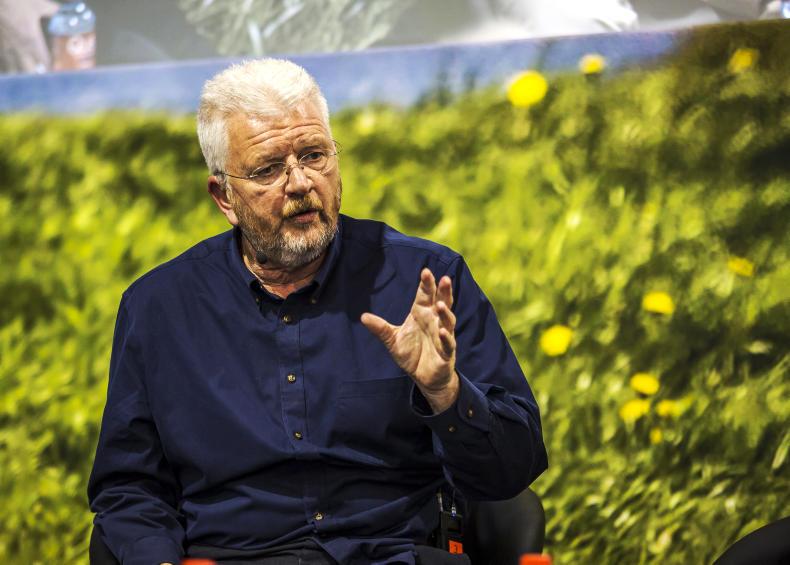The main elements of the EU new green deal for sustainable food production will have increased the fears of farmers and the food and drink industry across Europe that the new approach is very much like the old approach: loads of regulatory sticks and very few supportive carrots.
A deep dive into the green deal for agriculture shows regulatory and cost constraints in 25 of the 30 measures, while supportive measures are, at best, aspired to in only five.
The overall assessment of the new farm-to-fork sustainable food practices action plan is that the increases in costs and restrictions in production methods are very real, while the notion of how these costs are recovered is not really set out in the plan or is at best aspirational. Disconnected policy
This lack of any sense in which EU food prices should reflect increased EU regulatory costs unfortunately reflects a continuation of a disconnected EU policy that insists on intervening directly where production costs and “standards” are concerned, but adopting a laissez faire, free market policy where food prices are concerned.
For many EU policymakers, food price levels are “guided or signalled“ by the invisible hand of competition, while production standards and costs are set by very visible regulation.
Unfortunately, the reality of the supermarket-dominated EU agri food market over the last 20 years has been that the only signal is “next year cheaper”!
Higher costs will simply drive EU producers out of business
So while clearly a new green deal should look at new regulatory requirements where they are needed, the cost of these and existing regulation are not invisible and if not recovered from the market place, higher costs will simply drive EU producers out of business to be replaced, inevitably, by product coming from less stringently regulated regions.
As the table below shows, food prices in Ireland fell by 7% between January 2015 and December 2019, whereas the overall cost of living went up by 1.8%.
Indeed across the EU since 2000, spending on food and groceries has halved, with average consumer spending on food/groceries now under 9% of total consumer spend.
The notion that below-cost selling is purely to the advantage of consumers is not true. Very explicitly, low- or below-cost offerings of fresh food, such as meats, milk and seasonal fresh vegetables, are used to entice consumers into the shop.
The loss-leading, below-cost items represent four or five known value items out of a shopping basket of 50 to 70, even up to 100 items - meaning that while the supermarket discounter makes no or low margin on the low-cost products, they make up for this by taking high margins on the remaining 60 or so less-price-sensitive purchases.
Accusations
Disingenuously when supermarkets or discounters are confronted with the accusation that retail price doesn’t reflect costs and that producers and processors are getting no margin, their response has been 'neither are we'.
Unfortunately, unlike the supermarket, the supplier of fresh food and the farmer don’t have the capacity to recover margin across a range of products and thus see lower and lower returns.
To be very clear, loss-leading or below-cost selling is not a market-led reflection of consumers' demand for low prices.
If this were the key driver, surely consumers would insist that highly-prized products such as smart phones would be offered for sale below cost.
The sole beneficiary of below-cost selling is the supermarket retailer
Below-cost selling and loss-leading is a stunt by which, unfortunately, food prices and value is undermined by dominant buying power rather than some natural phenomenon of free markets.
Below-cost and discounted pricing is explicitly prohibited for a range of key consumer products, such as smart phones, pharmaceutical products and indeed energy supply.
The sole beneficiary of below-cost selling is the supermarket retailer. The consumer pays a composite price across the product range, with some discounted purchases compensating for some costly ones.
Moreover, even before we move to adopt the new green plan, input costs and regulatory compliance costs have increased dramatically for EU farmers and food processors over the years, as the table below tracking input costs in agriculture in Ireland shows.
There is a chronic disconnect here. If food products are to reflect a climate change dimension in terms of costs, then this must be reflected in food price.
This means banning, by regulation, below-cost selling or loss-leading of fresh food products such as meats and milk plus fresh vegetables.
Let the retailer use some of the other 60 to 90 products in the shopping basket to entice consumers.
The energy sector is probably the best and most recent example of an approach to pricing that joins up the cost and price dynamic.
Pricing tariffs
Sustainable energy products are given supportive pricing tariffs and cannot be sold below cost. Consumers pay more for this category of energy to reflect increased consumer demand for sustainable energy.
This joined-up policy on energy pricing means that not only is sustainable production supported versus non-compliant products, long-term investment in innovative sustainable systems and products is also encouraged.
This is a far more realistic approach to underpinning sustainable food production in the EU, than a solely regulation-driven approach.
